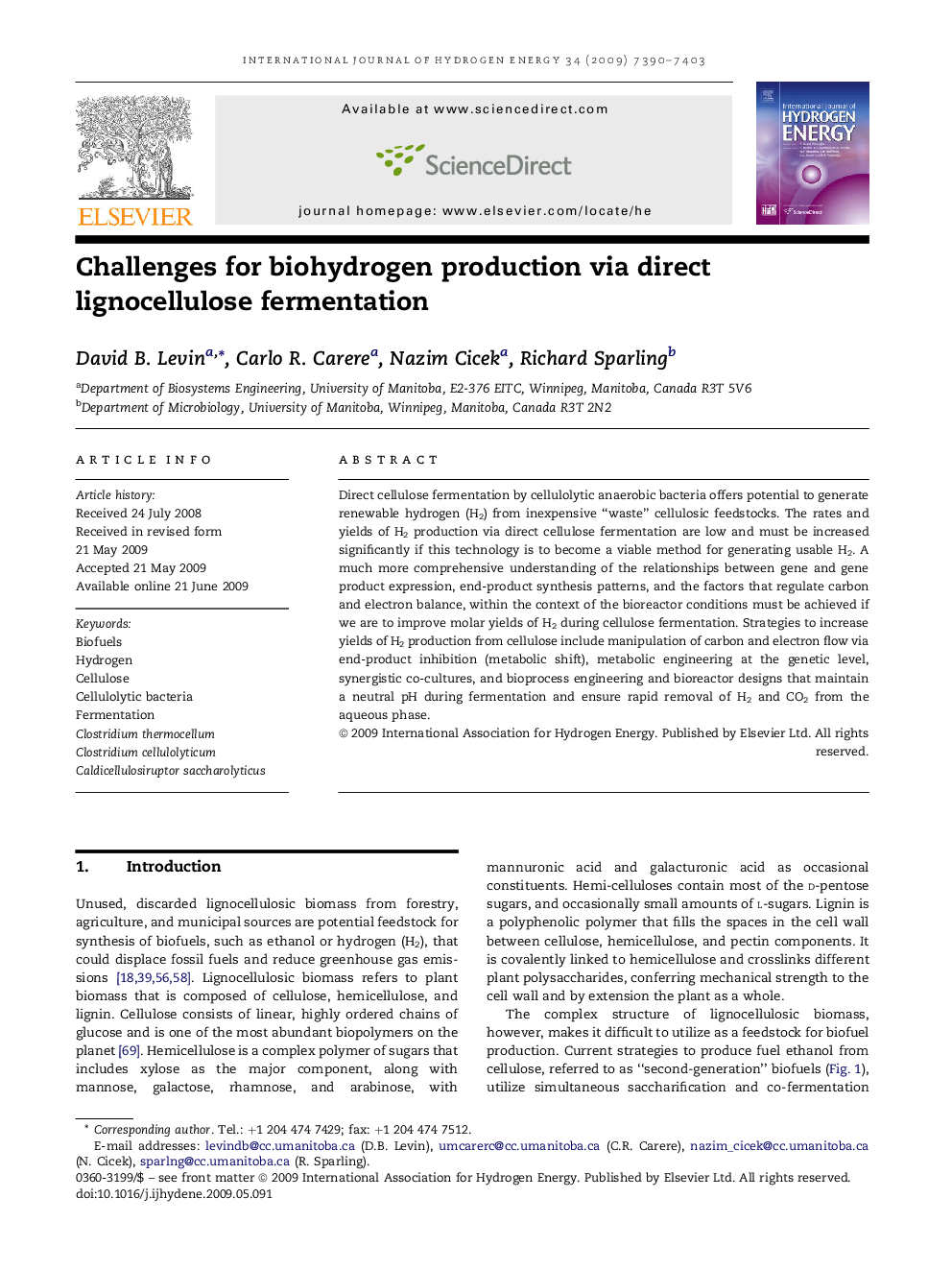| Article ID | Journal | Published Year | Pages | File Type |
|---|---|---|---|---|
| 1281129 | International Journal of Hydrogen Energy | 2009 | 14 Pages |
Direct cellulose fermentation by cellulolytic anaerobic bacteria offers potential to generate renewable hydrogen (H2) from inexpensive “waste” cellulosic feedstocks. The rates and yields of H2 production via direct cellulose fermentation are low and must be increased significantly if this technology is to become a viable method for generating usable H2. A much more comprehensive understanding of the relationships between gene and gene product expression, end-product synthesis patterns, and the factors that regulate carbon and electron balance, within the context of the bioreactor conditions must be achieved if we are to improve molar yields of H2 during cellulose fermentation. Strategies to increase yields of H2 production from cellulose include manipulation of carbon and electron flow via end-product inhibition (metabolic shift), metabolic engineering at the genetic level, synergistic co-cultures, and bioprocess engineering and bioreactor designs that maintain a neutral pH during fermentation and ensure rapid removal of H2 and CO2 from the aqueous phase.
